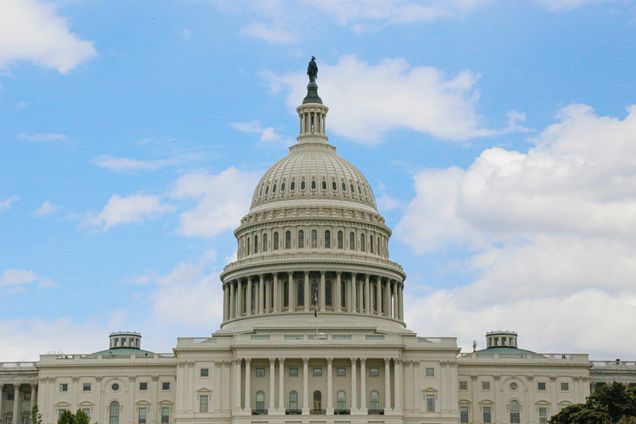Testimony Before the US-China Economic and Security Review Commission: China’s Energy Plans and Practices
Editor’s Note: The following is a testimony delivered by Dr. Cecilia Han Springer to the US-China Economic and Security Review Commission hearing on ‘China’s Energy Plans and Practices’ on March 17, 2022.
To Chairs Glas and Friedberg, to the Commission, good afternoon. My name is Cecilia Springer. I am the Assistant Director of the Global China Initiative at the Boston University Global Development Policy Center. I have done research related to China, the environment and energy for over eight years, and my current work at the Global Development Policy Center focuses on the environmental impacts of China’s overseas investment, energy and climate policymaking processes within China and industrial decarbonization. I work with an interdisciplinary team at Boston University as well as with partners at academic institutions, think tanks and civil society around the world. Thank you for the opportunity to share this research today, and I hope our findings are helpful to you.
I want to begin by placing our research in the context of an ongoing global infrastructure investment gap. In order for countries to meet global collective targets such as the Paris Agreement and the Sustainable Development Goals, a dramatic scaling of infrastructure financing on the order of 2 percent of global GDP will need to mobilized each year through 2030. Taking the example of just renewable energy, in order to achieve net zero emissions by 2050, there is an investment gap of around $700 billion per year.
It is clear that global demand for infrastructure investment is far greater than what the US, its allies and multilateral development banks have been interested in or capable of fulfilling. The resulting infrastructure gap, particularly for energy infrastructure in developing countries, means that many of these countries are eager for new sources of infrastructure provision. It is in part thanks to this host country demand that China has emerged as a major provider of international debt, equity, and other forms of support for infrastructure development.
There are several key trends driving China’s recent overseas energy infrastructure engagement. First, China’s overseas development finance for energy infrastructure has declined in recent years, with no new loans from China’s policy banks in 2021 for the first time this century. However, in the energy sector, cumulative Chinese development finance has already far exceeded Western development finance.
Second, looking beyond development finance, China’s foreign direct investment, that is, provision of equity investment from Chinese companies, has remained relatively constant in the energy sector, with an increasing trend towards the electricity sector and transmission and distribution projects. This leads to an important focus on China’s engagement specifically in overseas power generation infrastructure. Here, our research shows that coal has been the largest destination for Chinese development finance and FDI in overseas power generating capacity.
Our research also attempts to explain why China has favored carbon-intensive energy infrastructure overseas. Over two-thirds of China’s overseas energy development finance is in fossil fuel-related activity. Host countries play a large and under-appreciated role – what we call pull factors – in directing Chinese infrastructure support to carbon-intensive energy sources. Within China, trends in domestic coal capacity, among other push factors, have led to an increase in policy bank support for China’s coal enterprises and equipment and service providers in going overseas.
This carbon-intensive overseas energy infrastructure could have major global environmental impacts. Altogether, the carbon dioxide emissions associated with China’s fossil-based overseas power generating infrastructure could reach over 300 million tons of carbon dioxide emissions per year, or even as high as 600 million tons per year if all future plants come online and contracting arrangements for overseas plants are considered in addition to capital provision, an amount nearly equal to Canada’s annual energy-related carbon dioxide emissions. However, it is important to note that within all public and private finance for overseas coal plant development in recent years, China is only responsible for 13 percent of generating capacity, and in addition, there is evidence that China’s overseas coal plants are relatively more advanced in terms of emissions intensity and therefore technology quality.
In contrast, China’s support for overseas renewable energy development has been at very low levels, but growing in recent years, driven by foreign direct investment. China’s development banks remain wary of financing renewable energy, and host countries have yet to significantly increase demand for renewable energy. It remains to be seen if Xi Jinping’s announcement from last year that China would increase support for low-carbon energy in developing countries and not build new coal-fired power projects abroad will drive a major shift in the composition of China’s overseas power sector engagement and a scale-up of renewable energy development. As with coal, host country policies also play a major role in directing Chinese support towards renewable energy.
Considering this analysis, and the pressing need for infrastructure finance to meet climate and sustainable development goals, I outline policy recommendations for the US in two key areas. First, the US must increase the scale of its overseas energy engagement and direct the composition of this engagement towards clean energy, to no longer lag behind China and to lead by example in achieving global collective goals. This will require a systematic mobilization of bilateral and multilateral US development finance institutions, as well as concrete frameworks from the emerging Build Back Better World Partnership. Second, the US must expand its modes of cooperation with countries seeking infrastructure finance, especially in the realm of clean energy. Here, the US can draw on its relative advantage – decades of experience and long-term relationships – to provide technical assistance and capacity building. These actions will bolster opportunities for US renewable energy developers to go overseas and increase US contributions towards global collective goals.
Read the Full Testimony